
When you establish your own startup the important thing you need to understand as soon as possible that there is no some kind of a ready-to-use business plan you can utilize. Startups try to create innovative products and discover new markets. On one hand, it might give you some freedom due to lack of competition when you create something unique, but on another hand, you get in the atmosphere of extreme uncertainty.
Because startups often accidentally build something nobody wants, it doesn’t matter much if they do it on time and budget. The only thing that matters is how fast a startup learns and makes strategical pivots in order to achieve the product-market fit point:
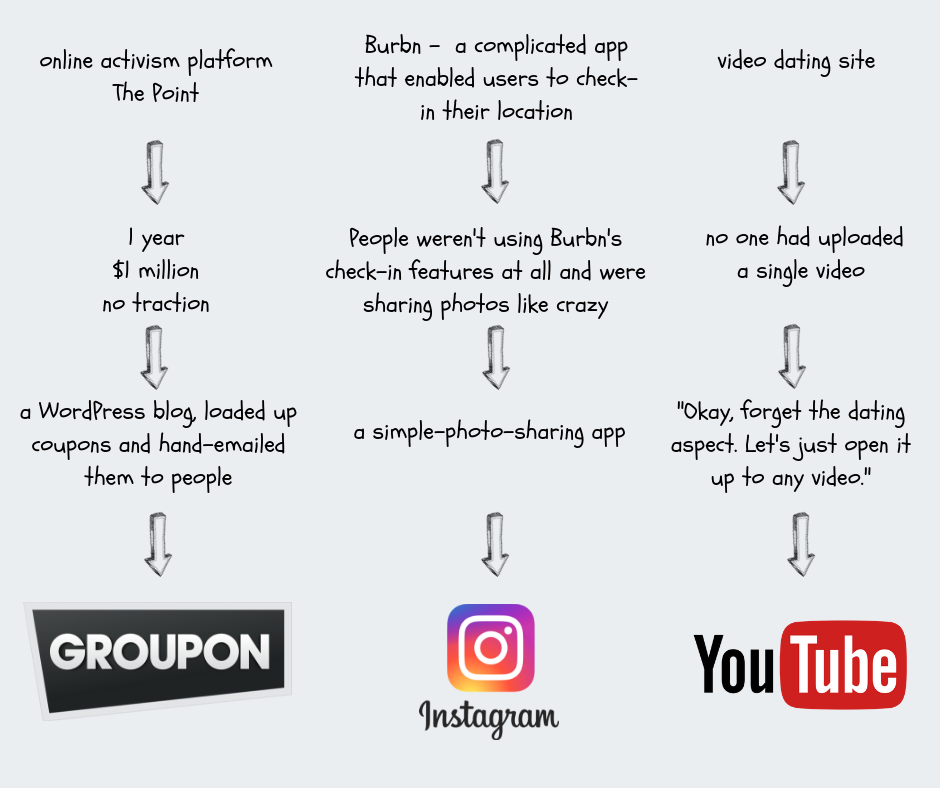
Surprising, huh?
MVP goes from “Minimum Viable Product” and the key word here is MINIMUM. Many entrepreneurs forget about this particular word or feel ashamed of releasing simple non-stable versions of their product. Successful entrepreneurs consider MVP app development as an entry to their learning lifecycle and try to launch their products as soon as possible.
As a real example, read our case study about launching a quick MVP project to validate an idea.
Before building a new feature or a product ask yourself 3 simple questions:
While answering these questions you will create a list of assumptions (because nobody can be 100% sure about that).
After that, define the leap of faith assumptions. It is pretty easy to recognize them: if your leap of faith assumptions fail, the overall product idea seems not to be working.
Everything you can do is to run experiments and learn from your target audience.
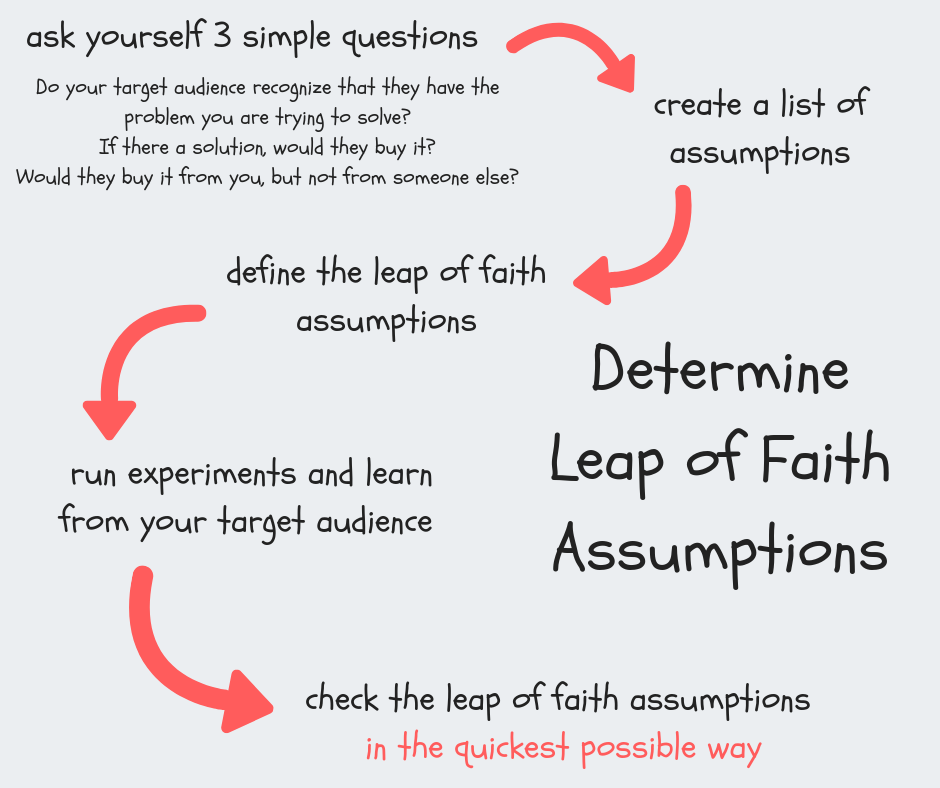
Congratulations! Now, you know the goal of your MVP: to check your leap of faith assumptions in the quickest possible way.
Growth Engine is another kind of assumptions that define how your product will attract new users. You can make product growth assumptions based on the following Growth Engine types:

Of course, due to startup uniqueness, you can find your own Growth Engine.
The only advice here is to focus on only one Growth Engine assumption in your MVP and test it as soon as possible.
Let’s assume that your happy day has come. You launched your MVP and what’s next? How successful your MVP is? What should you do to attract more users? How many people use feature A and how many use feature B?
The truth is that I have never seen in my life an MVP launch that got successful right away. Almost all MVPs get pretty pessimistic numbers in the beginning, but experienced entrepreneurs do not fall into despair. They learn from user behavior data and steer their product strategy in the right direction.
Visitors/sessions/pageviews number and other metrics provided by Google Analytics out-of-the-box are nice to have, but they don’t give you any actionable insights. What you need to define is your actionable metrics.
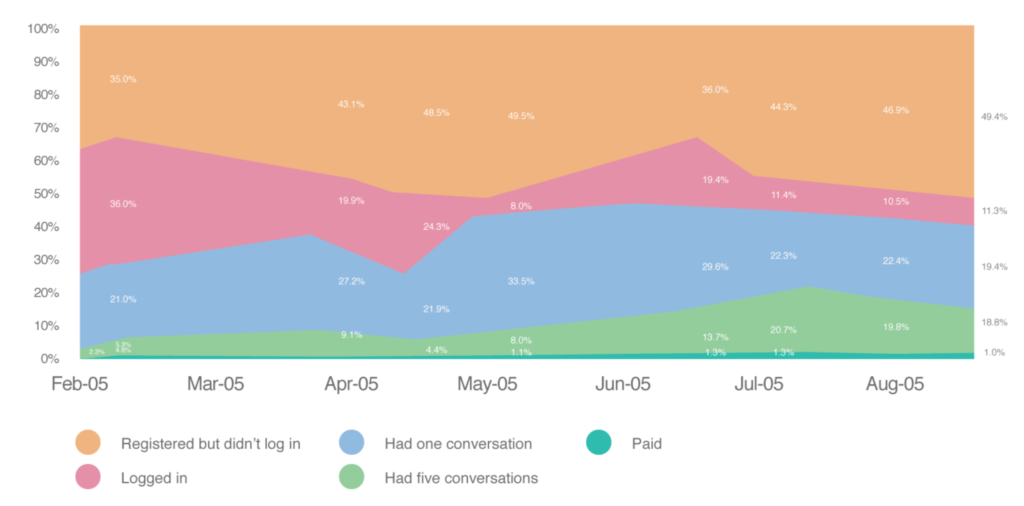
First of all, analyze your leap of faith assumptions and define the useful effect of your MVP. This can be represented as a chain of actions that you assume your users should do in order to get value from the product. Then, set up Google Analytics Goals and Conversion Funnel based on your vision. After the MVP product launch you will be able to see:
Such data will allow you to make new assumptions on how you can improve your initial numbers.
For the examples of Growth Engines above you need to track the following data:
Viral Engine
Sticky Engine
Your product is growing if the Churn Rate is less than Acquisition Rate.
Paid Engine
Your product grows if Customer Lifetime Value is more than Cost Per Acquisition.
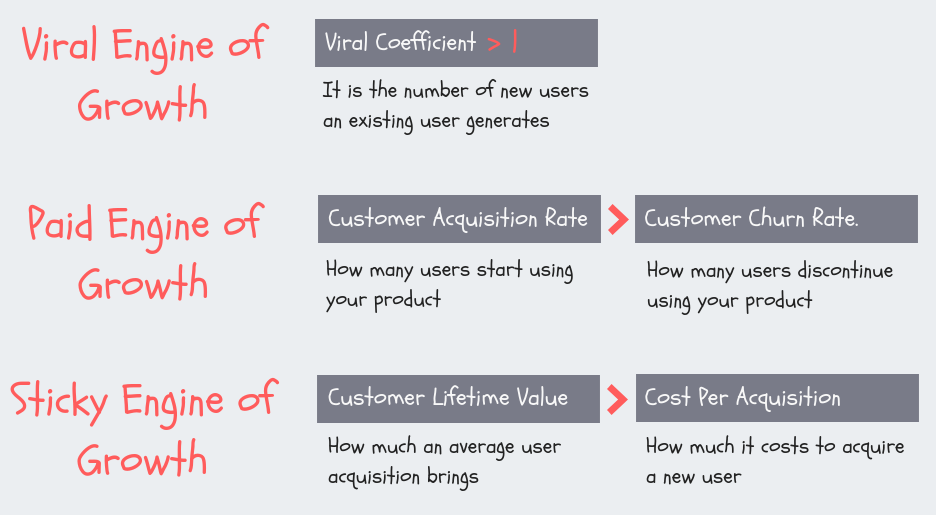
Thus, it usually requires additional efforts to define and set up appropriate metrics tracking in an MVP. Feel free to cut the functionality during your MVP app development as much as possible, but metrics gathering should be there 100%.
If you are about to build an MVP, that means that you have a solution for a certain problem and there are many people out there having that problem. Find those, who are struggling with it. Speak to them and describe your solution, get a feedback before actual implementation.
After your MVP product development is completed, share it with the early adopters. The thing is that a massive market user is pretty picky. If they don’t like your product they won’t use it – simple as it is. Early adopters are the opposite: they will provide you a feedback. They are interested in improving your product. They will spread the word about it among their friends.
For you, as an entrepreneur, it is even more important to get a feedback on your assumptions rather than provide a solution based on them to your users. There is a number of tricks that allow you to do that without actual MVP product development.
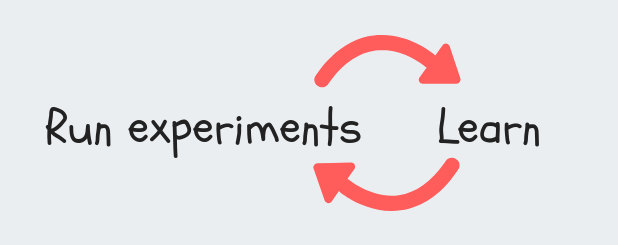
Zappos, acquired by Amazon for $1.2 billion in 2009, was started as a concierge MVP. Nick Swinmurn had an assumption that people would buy shoes online and decided to test it in a pretty simple way. He went to one of closest shoe stores and made photos of shoes there. Then, he created a very simple website with just photos of those shoes and prices.
As soon as he got the first order, he went to the store, bought the shoes for his own money and shipped them to the customer. He was operating this way for some time in order to speak to his customers and learn from them. After 5 years Zappos had annual sales of more than $1 billion.
Concierge MVP seems to be a horrible idea from the classic business perspective: no automation, it doesn’t scale and etc. But it allows learning from your target audience quickly w/o additional investments into infrastructure, which is more important in the startup world.
Can you imagine how hard and pricy it was to build something like Dropbox? It was one of the pioneers in cloud data storage supporting different operating systems. Even a simple MVP to showcase Dropbox could cost insane money, so the Dropbox founders decided to start from a simple video that shows how the product works.
The trick here is that they didn’t have the product working at that time – just a prototype. But they managed to record that video and create a landing page in order to get a feedback before actual implementation. The result was overwhelming: 75 000 people joined their waiting list overnight.
What can be a better proof of interest?
It is closely connected with Find Early Adopters. The idea behind this is to create online communities in Telegram, Slack, Facebook and gather there the people who are struggling with the problem you are trying to solve. Talk to them, share your assumptions and collect a feedback.
This approach is pretty popular in the crypto space these days: every ICO tries to create a community around that can provide a feedback, participate in beta testing and crowdfund further development of their product.
MVP is always a guess. The faster you present it to people, the less time and resources you spend to get into the learning lifecycle. Any additional work beyond what is required to start learning is a waste.
Observe users’ behavior, speak to early adopters and make data-driven decisions to achieve the product-market fit point.
If you’re up to building an MVP, we’re insisting on reading “The Lean Startup” by Eric Ries. Good luck with your lean startup development!
Check out our newsletter